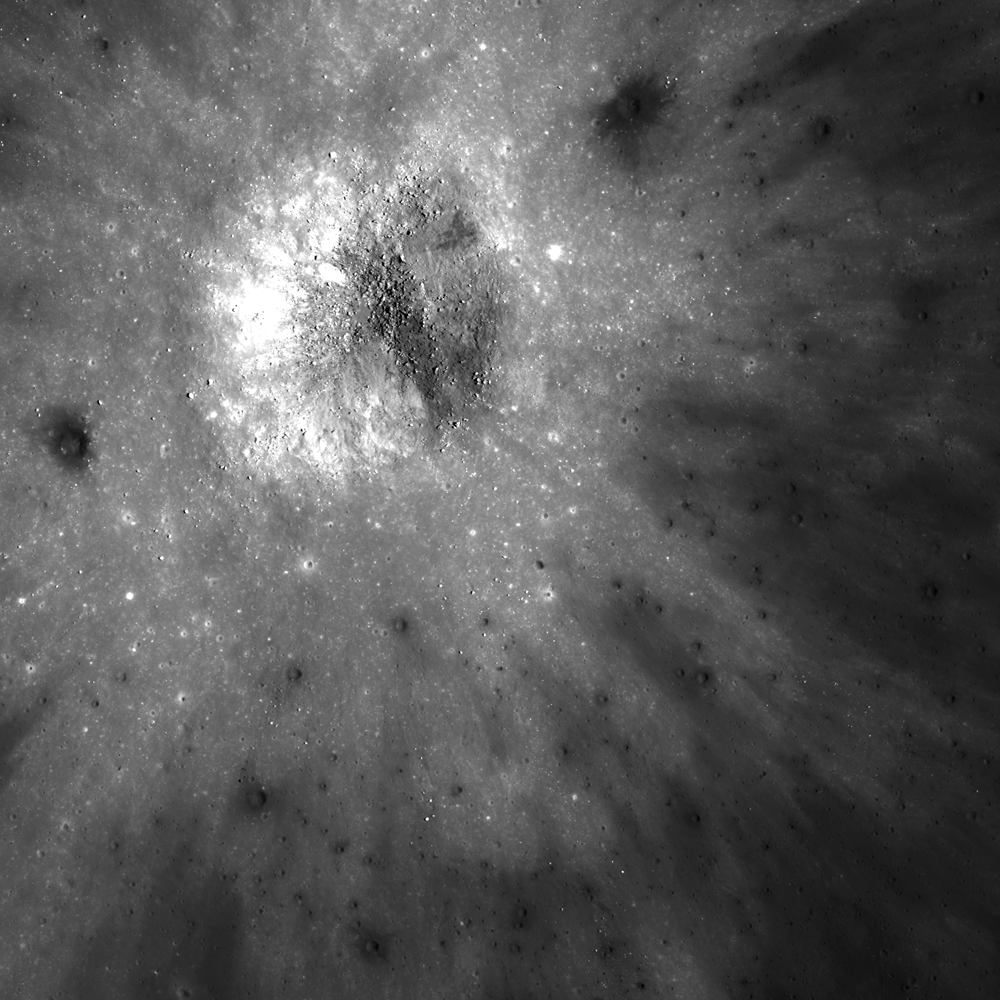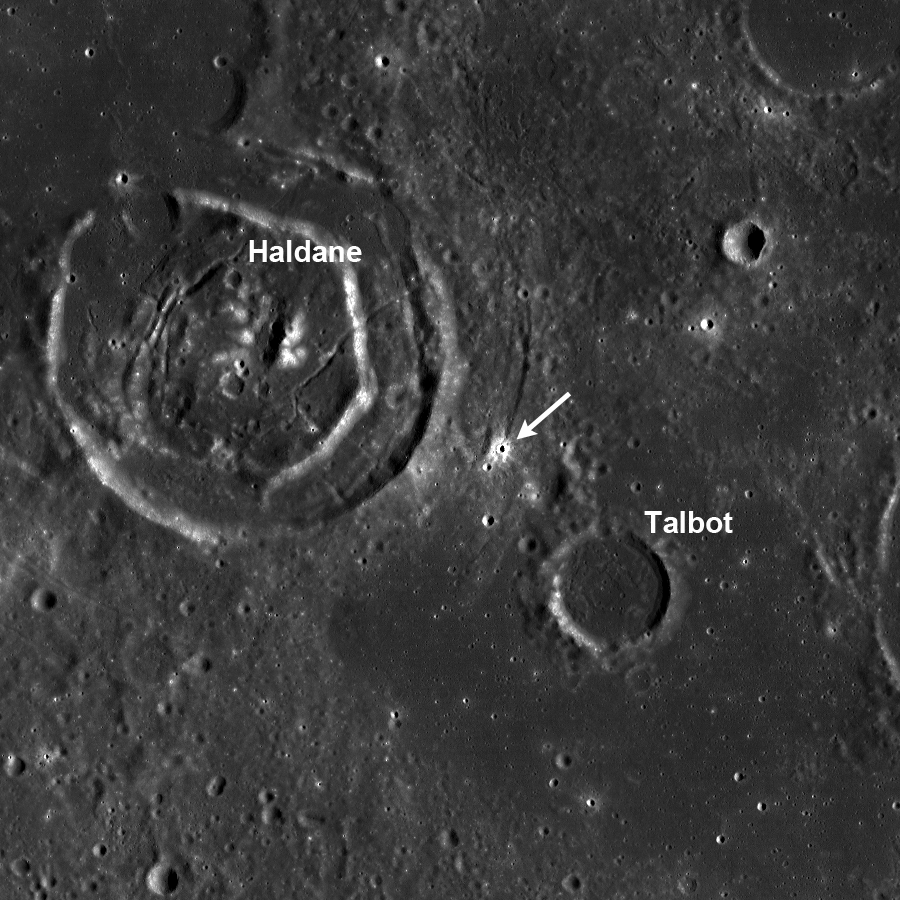
Today's Featured Image highlights a small (830 m diameter) fresh impact crater (located at -2.017°N, 84.948°E) with an ejecta blanket peppered with smaller impact craters. Two of the largest superposed impact craters excavated lower reflectance material (darker) from beneath the main ejecta blanket. This low reflectance material is more mature than the primary crater ejecta. The ejecta from the primary impact is higher reflectance since it is immature material that has not been darkened by space weathering processes. Some of the small impacts have higher reflectance ejecta, which means they did not puncture through the fresh primary crater ejecta blanket.
The craters seen in the Featured Image are a mix of self-secondary and small primary impacts. The term secondary crater describes impact craters formed by ejecta materials from larger impacts. Self-secondary craters form as late stage ejecta is superposed on early ejecta material from the same impact event and are for the most part found near the primary impact crater. The velocity of ejected material increases with distance from the primary crater; therefore, most self-secondary craters are created by low-velocity impacts. Secondary craters formed furthest from the primary crater result from higher velocity ejecta, which makes those secondary craters harder to discern from small primary craters. Secondary craters on the Moon are estimated to have a maximum size of ~4% of the primary crater diameter.
Planetary scientists use the density of craters on impact ejecta as an indicator of age of the impact, based on our understanding of the flux of primary impacts over time. Self-secondaries on crater ejecta are not primary impact craters and inclusion of self-secondary impacts in a measurement will give a higher crater density, and thus result in an older age estimate for that particular surface. The age estimate for the impact crater Giordano Bruno is an example where self-secondaries complicate our understanding of the relationship between surface age and crater density.
The fresh impact crater in today's Featured Image is between two relatively older craters: Haldane (40 km diameter) and Talbot (12.4 km diameter). The crater Talbot has a visible rim, but the ejecta blanket was embayed by mare basalt. Talbot's floor is flooded with mare basalt as well. Haldane is also as old or older than Talbot since sections of Haldane's rim are completely destroyed.
Explore the full NAC image below!
Related Images:
Published by Sarah Braden on 3 December 2013
